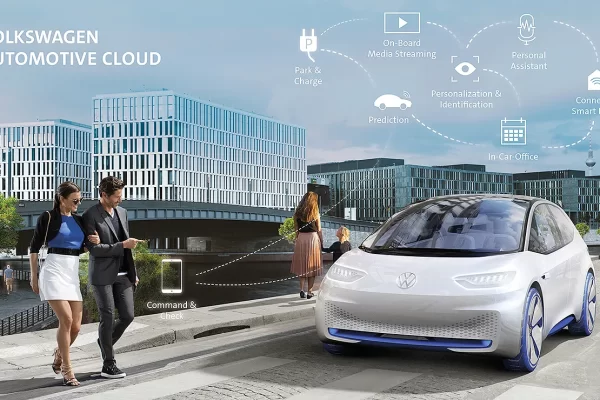For more than half a century, the Dodge Charger has been a symbol of American automotive power and performance. From its debut in the mid-1960s during the muscle car era to its resurgence in the 21st century as a modern sports car, the Charger has probably caught your eye at some point. Its journey is a testament to the adaptability and resilience of a brand that has consistently reinvented itself to meet the changing demands of consumers and the industry.
This article traces the roots of the Dodge Charger from a classic muscle car to its current status as a revered sports car. You’ll follow the Charger’s initial rise to fame, its eventual fall and absence, and its triumphant return in the new millennium. Along the way, you’ll discover key models, design changes, technological advancements, and the impact each generation had on the automotive market. As the world shifts toward electric vehicles, you will also ponder the potential future of the Charger in this new era.
The Beginning of the Dodge Charger: Classic Muscle
The initial 1966 model sported a fastback roofline and four bucket seats, giving it a distinct look. The first-generation Charger was powered by V8 engines ranging from the modest 318 cubic inch, to the legendary 426 Hemi. In 1968, Dodge debuted the second-generation Charger, arguably one of the most iconic car designs in American history. With its “Coke bottle” styling, hidden headlights, and high-performance R/T (Road/Track) variant, it became a symbol of American muscle and power. In this era, the Charger became a cultural icon, featuring prominently in movies and TV shows, including the classic television series “The Dukes of Hazzard” and the Steve McQueen film “Bullitt”. This had countless admirers running to their local Dodge Charger dealer, wanting to be just like their favorite movie character.
By the mid-1970s, the Charger, like many muscle cars, faced significant challenges. Rising insurance costs, growing environmental concerns, and the 1973 oil crisis led to changing consumer preferences. Performance took a backseat to fuel efficiency and practicality, leading to the end of the muscle car era and the discontinuation of the original Dodge Charger in 1978.
Transition Period: Absence and Return (1978-2006)
The muscle car era had come to an end due to factors like high fuel prices, increased insurance costs, and changing consumer preferences. In 1981, Dodge revived the Charger nameplate but, significantly deviating from its muscle car roots, it was now attached to a subcompact hatchback coupe based on the Dodge Omni. This version of the Charger, equipped with a four-cylinder engine, aimed to appeal to a market more interested in fuel economy than high-speed performance.
The subsequent absence of a true successor to the original muscle car was felt for decades. During this period, the automotive industry underwent significant shifts, with a growing focus on efficient, safe, and environmentally friendly vehicles. The Charger nameplate floated around in various forms, including a front-wheel drive sports coupe in the 80s, and as part of a concept car in 1999, but none of these captured the spirit and allure of the original.
Things began to change at the dawn of the new millennium. In 2005, Dodge announced that the Charger would be returning, this time as a four-door sedan with hints of the original’s muscular aesthetics and performance. The company showcased several concept cars that teased the return of the Charger, creating anticipation for the relaunch. The stage was set for the iconic muscle car’s return, blending elements of its powerful heritage with modern sports car features and technology.
The Rebirth of the Dodge Charger: The Modern Sports Car Era (2006-present)
In 2006, Dodge made the landmark decision to reintroduce the Charger, marking the rebirth of this iconic muscle car but in the form of a modern sports sedan. With this move, Dodge returned to its roots, reincarnating the bold spirit and performance that characterized the original Charger. Despite initial skepticism from enthusiasts about the four-door design, the 2006 Charger demonstrated that it could carry forward the muscle car legacy while adapting to the modern market’s demands.
Key Features and Advancements of the Modern Charger
Performance Improvements
The modern Charger boasted significant performance enhancements compared to its predecessor. At its heart was the reintroduction of the famous HEMI V8 engine, providing impressive power and acceleration. Over the years, Dodge further raised the performance bar with models like the SRT8, Hellcat, and the 700+ horsepower SRT Hellcat Redeye.
Design Evolution
The new Charger’s design evolved significantly from the earlier models, while still retaining key features that harked back to its muscle car heritage. The aggressive and sporty look was still there, but now complemented with sleek lines and aerodynamic enhancements.
Technological advancements and Safety Features
Modern Chargers came equipped with cutting-edge technology and safety features. These include advanced infotainment systems, connectivity options, adaptive cruise control, advanced brake assist, and lane departure warning systems, which contributed to a refined driving experience.
Reception and Impact on the Modern Car Market
The reintroduced Dodge Charger received a warm welcome from the automotive world. It quickly re-established itself as a force to be reckoned with in the sports car segment, proving that the legendary muscle car could successfully transition into the 21st century. Despite fierce competition from other performance sedans, the Charger has maintained significant market share, a testament to its enduring appeal and performance capabilities.
From its beginnings as a classic muscle car to its evolution into a modern sports sedan, the Dodge Charger has consistently proven its resilience and adaptability in a changing automotive landscape. As it stands at the precipice of the electric era, it carries with it a rich legacy of power, performance, and cultural significance. As the Charger continues to evolve, it promises to be a compelling symbol of how iconic brands can honor their past while driving the future of automotive innovation.





